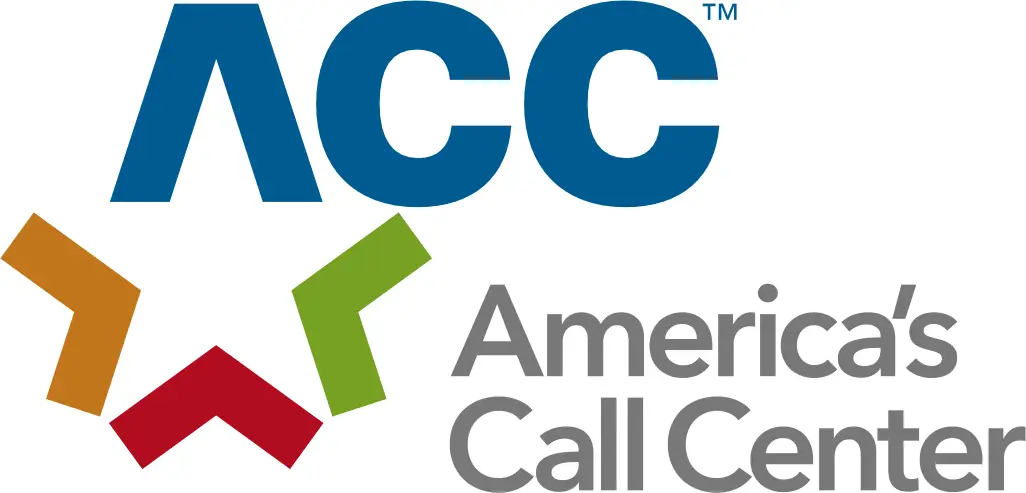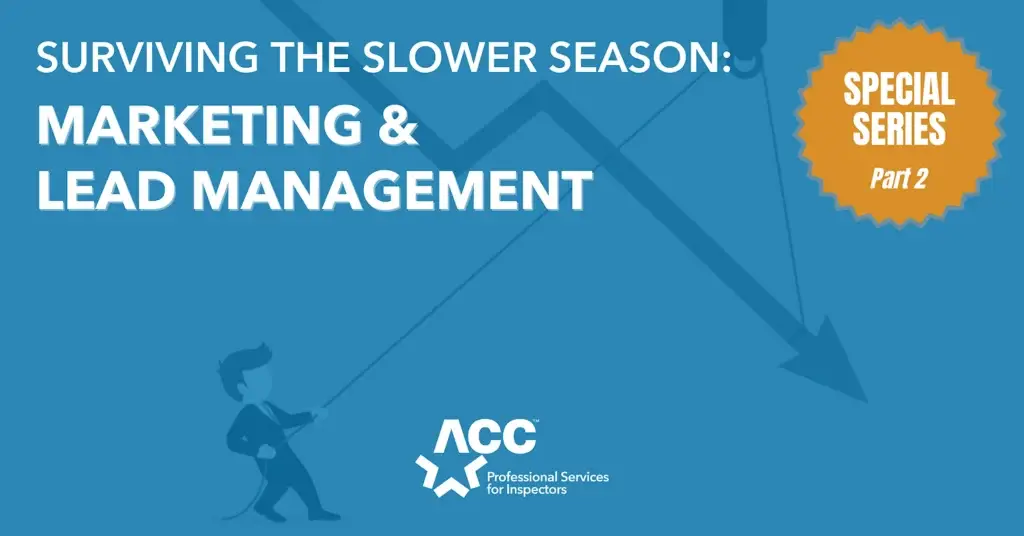As we previously noted in the first post of this series, home inspection volume on a national level continues to be softer than usual this time of year. Now, with winter around the corner, combined with sustained challenges in the housing market and an uncertain economy, home inspectors remain concerned about the future of their business.
Shifting gears
We all know the late fall and winter months are traditionally a slower period for most inspectors across the country. However, if they aren’t careful this year, they could easily see a slower season turn into an economic blizzard for their business.
While there’s no shortage of speculation out there about what our housing market is going to do over the next year, most housing market prognosticators do agree that things are going to be a lot slower in 2023 than they have been in the past few years. And yes, that downturn will obviously have an impact on inspection volume. Yet, it’s what inspection business owners do during this downturn that will truly separate the success stories from the failed and forgotten. Here’s how to pivot now and improve your odds of becoming a success story when the tale is told.
Driving & delighting
As incoming leads become scarcer and home inspection business owners are forced to compete more with each other, they must:
- Drive more new business leads by refining and dialing up your marketing efforts
- Close more leads and delight more customers by having a comprehensive lead management process in place
We encourage you to explore the other methods and approaches we cover in this series that can help home inspectors not just survive during these slower times, but actually thrive. However, there’s little debate that engaging in the right marketing efforts while having a strategic plan for managing the greater customer experience, are always things an inspection business owner should be doing. No matter if economic times are lean or fat.
Upping your marketing game: A list of “must-dos”
It’s simple. When there’s less inspection volume, you have to compete more for leads. And marketing is all about promoting your brand in the market to drive more of those leads so you can convert them. However, these days, there are a dizzying number of methods for reaching your audience. But when budgets get tight, it’s time to narrow your focus on where you get the greatest ROI. Here are a few key areas you’ll want to make sure you’re investing in right now:
SEO: At its core, SEO (Search Engine Optimization) is a long-term strategy. So, it’s our hope that you’ve already been investing in this acquisition process. If you haven’t, it’s time! When there are fewer people actively searching for information related to your inspection services, your website and content have to be showing up online sooner and more often than your competitors. Period.
Social Media: Social media marketing (SMM) is a tremendous way to connect with your audience and differentiate your brand from the competition. The key is to create engaging content that’ll resonate with your customers. Don’t quite know what this is? Then spending time to discover the answer is not a wasted effort!
Email: Now is a critical time to make sure you’re staying connected to previous customers and agents. By sending the occasional email – sharing relevant content, important/interesting updates about your brand, or even a simple holiday greeting – you’ll remain top-of-mind when they’re ready to engage the services of an inspector.
Content: Content marketing is a strategy that allows you to attract potential customers by providing them with informative and valuable content. Each of the three previous items in this list is part of content marketing, but as a strategy, it can be very effective. Additional content marketing media examples to consider creating for your inspection business include:
- Blogs
- Newsletters
- Videos
- Infographics
As you engage in promoting your business and services in the market, it’s important to remember to do it all in a clear, consistent, and branded way. Whether your audience interacts with or has exposure to your brand on a website, on social media, in a marketing flyer, or in an email, you must present it in a way that is unique to your brand’s voice, its look and feel (color pallet, logo, tagline), and that it produces the perceptions you wish to convey to your audience.
Managing your leads: A comprehensive approach
Now that you’re successfully promoting your brand with your target audience, expanding awareness, and building interest, you need to ensure that every lead crossing into your brand territory is closed, delighted, and ready to return for another round of awesome – hopefully in the near future. Here’s how to greatly improve your chances of nailing this most highly coveted trifecta of business-building outcomes.
Incoming
These days, potential customers expect to find your business and request to engage in the services and products you provide quickly, easily, and in a multitude of ways. Phone, email, text, business and referral websites, social media, and more. The convenience this provides to a would-be customer is immeasurable, but for the inspection business owner, it means you MUST have a process in place to manage those incoming leads as they flow in from those many sources.
Every incoming lead is always important and should be handled strategically and with care. But right now, especially so. You simply cannot afford to lose a customer because you let an incoming call go to voicemail. Or maybe you missed a text message and then forgot to respond until the next day. Or perhaps you didn’t see an email until several hours later because you were on an inspection and then it got pushed down further on the list as the day went on.
The simple act of responding quickly to an incoming lead in our industry is a business imperative. Did you know it’s been estimated that as much as 85% of callers who can’t reach an inspection company on the first try will not call back? And according to Consumer Reports, 75% of those same callers will not leave a voicemail. It’s also been proven that companies who contacted leads within an hour were seven times more likely to qualify a lead than the companies who decided to contact a lead just an hour later and sixty times more than the companies who waited 24 hours or longer.
The bottom line is…if you don’t respond immediately or soon after to an incoming lead, the odds of you converting that lead decrease dramatically. If you haven’t already, make the investment in establishing a thorough process for managing incoming leads so you can be as responsive as quickly as possible.
Closing
Just because a lead comes knockin’, that doesn’t necessarily mean you’ll get the job. Some inspectors answer their own phones and emails, respond to messages on social media and from their website, and more. They often feel there’s no better person to speak to and interact with a potential customer about the services they provide and how they provide them than the owner. And this may be hard for some inspectors to hear, but in most cases, they would be wrong.
The simple fact is you shouldn’t be the inspection business owner, the inspector, AND the sales manager. We know this because after a quarter of a century serving inspectors, we’ve closely analyzed the lifecycle of small- to medium-sized inspection businesses; and our experience overwhelmingly shows that the most successful ones are those whose owners focus more on doing inspections and growing the brand – NOT managing leads.
An inspection business can and should automate certain aspects of its lead management process. Automated email and text responses, chatbot integration for websites, and more. Consumers have embraced these technological advancements in communication and are willing to complete simple steps in the transaction process. However, according to a survey performed by research firm Clutch, nearly 90% of your customers will still prefer to talk to a real human being at some point. And it’s absolutely in your best interest for this to happen!
For example: A call comes in and they need a home inspection. Ah, the beginning. This is your opportunity to upsell your ancillary services. To educate, if needed, the caller on the process. To ask key questions about property specifications, access, utility considerations, client attendance, and more. To turn each and every lead and inquiry into an actual inspection – while showcasing what’s unique about the inspector and the brand. Can a form or chatbot do all that? Of course not.
Delighting
Your lead management process should be bound together by a strategic thread. A simple idea that guides each step and activity during the entirety of the lead management process and even through the inspection process lifecycle. To delight the customer.
The good news is, if you’ve established a comprehensive and thoughtful lead management process, you’re most of the way there. But it’s important to listen, learn, modify, and improve your process over time.
While the bulk of what we covered here was about active leads and turning them into inspections, you must also have a process for leads that don’t convert right away. Establishing a process for following up with these leads is just as important as the active ones. And just as you want to delight those converted leads all the way through the inspection lifecycle process – including the final delivery of the report, that last follow-up email, and even a thoughtful holiday card – you’ll want to determine how to do the same for those non-converting leads. Some simple follow-up communications include:
- Email to see if they might still be interested in your services or if you can answer any questions
- Email with content about your process and what makes you unique
- A call or text to see if they still need an inspection or if you can answer any questions
- Email about promotions you’re having or new services you provide
ACC (America’s Call Center):
ACC is a fully integrated customer service and communication-handling solution exclusively for home inspectors – no matter if you’re a sole proprietor or a multi-inspector firm.
ACC has 25 years of experience and knowledge of what it takes to successfully navigate more challenging economic cycles. And when budgets are tight, it’s good to have a partner that has a history of producing an increase of 15% – 30% in revenue after inspectors begin services while only paying an average of $2 – $5 an hour for those services. That’s a big boost for such a small investment! We are inspectors’ smartest approach to growth and the essential partner that will make all the difference for your business. During this shift in our industry, make a shift for your business. Make a shift to ACC.


